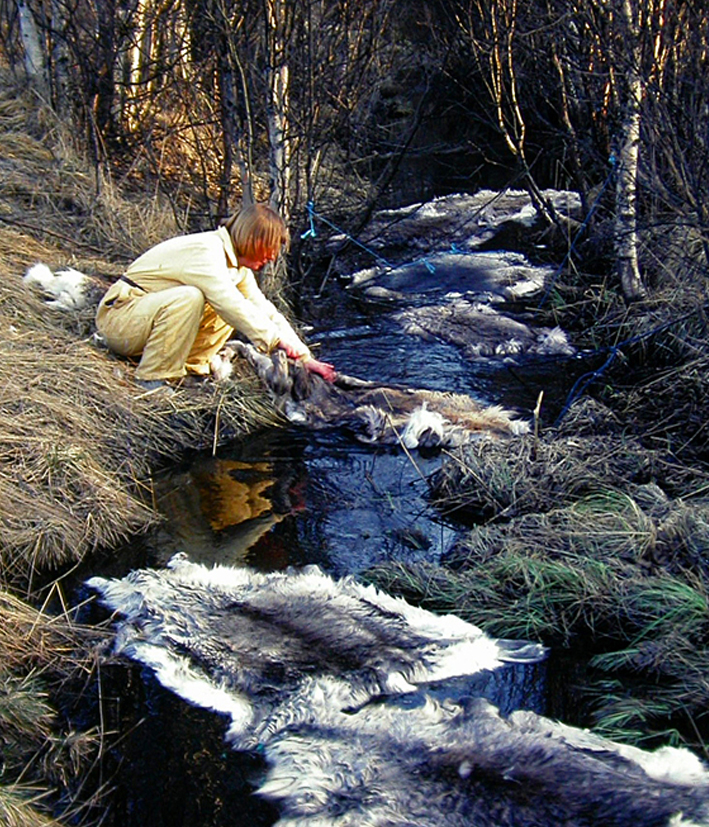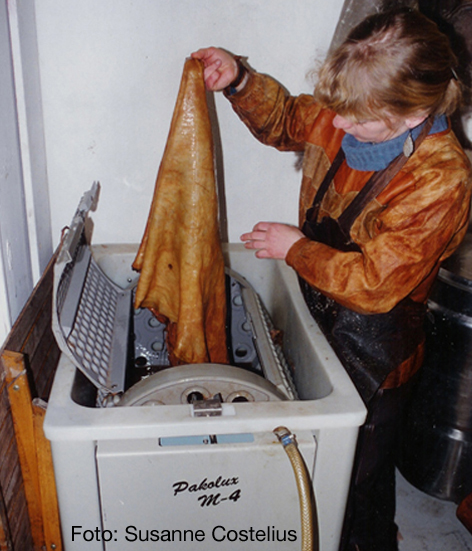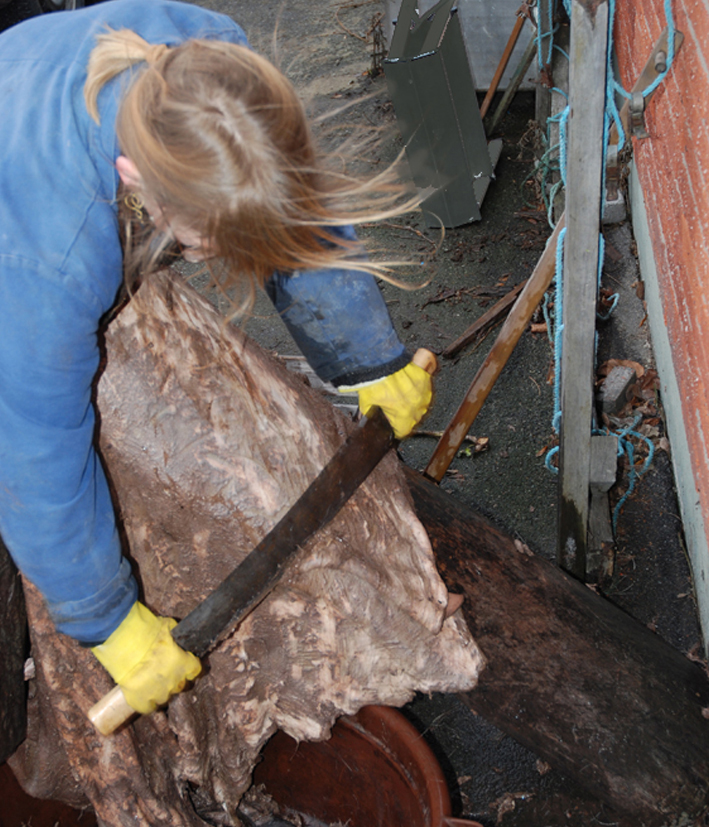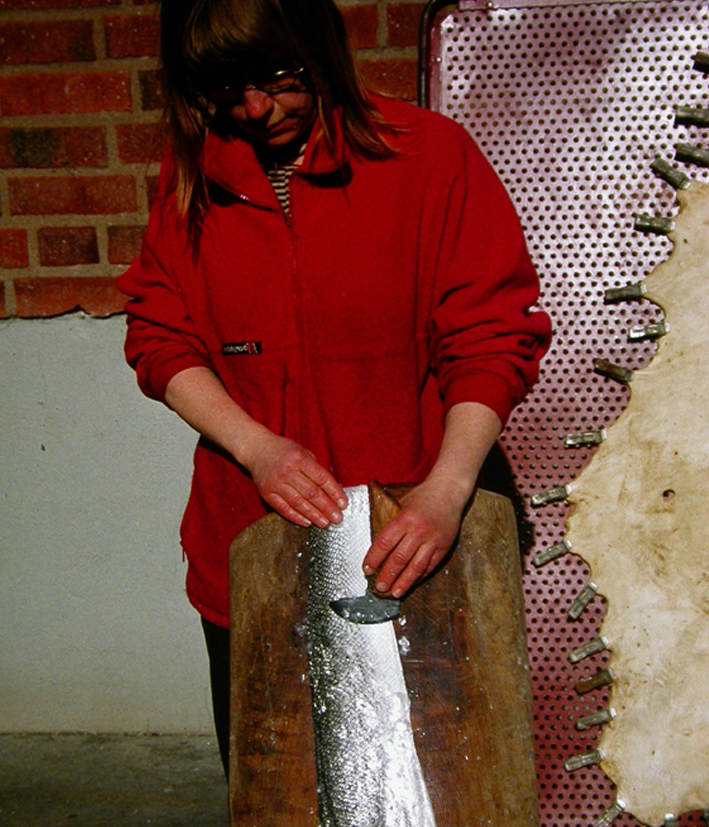Tannery
I tan
many types of skins (moose, reindeer, goat, sheep, beaver,
ostrich, and fish) using traditional tools and techniques I learned
from the Inuit and Indians in Canada, the Ainu women in Japan and the Sami people
in Sweden and Norway.




